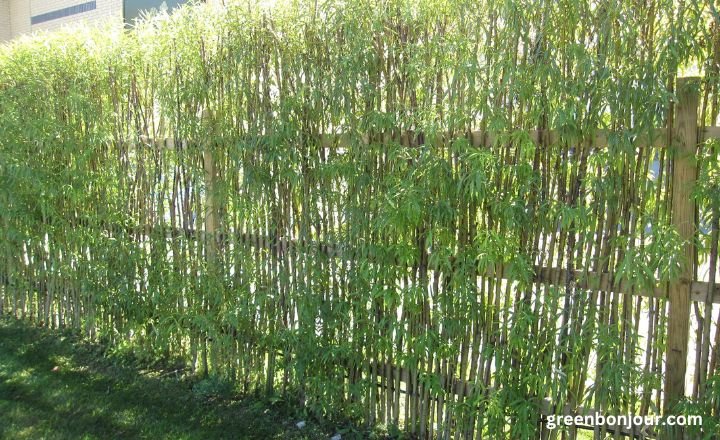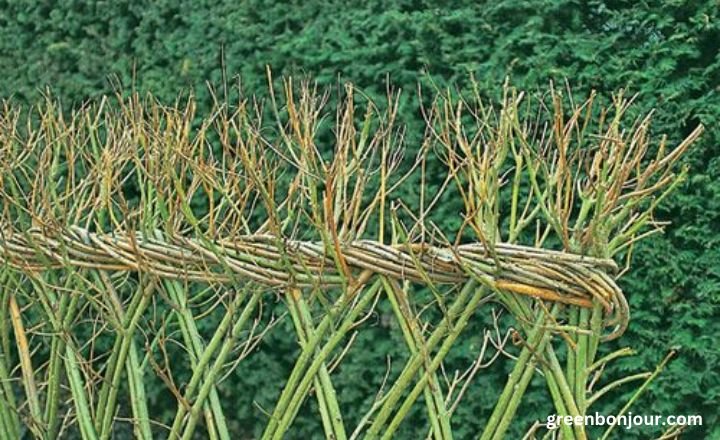If you are a beginner you should know what living willow fence is and how it works. This is also known as fedge which is used as boundaries in outdoor areas. You can use it to stop the animals from entering your garden and destroy your field. Building an old living willow fence can be tricky, it needs planning.
It can also be expensive but is commonly created in a diamond pattern using straight, and long willow branches, and also you can use some living willow fence structures. You need to learn about how to make it and use it. Because the fedge grows swiftly, up to 6 feet (2 meters) each year, pruning is required to keep the construct in the desired shape.
Planting a Living Willow Fence
You need to plant all the things about planting a live willow fence. The first step should be to select the retentive region that is moist and valid for the growth of the fence. You need to give them full sunlight because they thrive in full light. You have to grow them at least 33 feet away from any drainage or structured plants. Once you have selected the area to plant them, clear all the regions of grass and weeds as well.
The next step to have to do is to loosen the soil to a depth of 10 inches approximately and then include some compost. Now you can order willow rods. Depending on the Salix type, specialty growers often sell one-year rods in a range of widths and strengths. Take the rods that are 6 feet long. The number of rods required will be determined by the length of the fence and the spacing between the rods.
You should think about where you have to place your willow. It is a fact that moisture and broad sunshine are ideal growing conditions. For their quick growth, you must select a location at least 10 meters away from structures or pipelines.

It is a simple process to prepare the area for a living willow fence. You only need to use thread to trace the structure. It is recommended to do all this in winter and early spring. Purchase the willow whips, and soak the thick edges in water so that you can keep them away from dehydrating. Now you need to trim them before planting.
Growing a Living Willow Fence
Growing a living willow fence is not just about creating a boundary, it is about to have a dynamic and natural element in your landscape. The process includes planting dormant willow cuttings in the ground, where they quickly take root and begin to grow.
You will see when willow branches lengthen and intertwine, they create a dense and living barrier that offers privacy and protection. This technique allows for flexibility in design, as you can shape and prune the fence to fit your desired aesthetic.
A mature living willow fence requires regular maintenance to keep it healthy and thriving. You know that pruning back excess growth helps maintain its structure while watering ensures the roots remain strong.

Different varieties of willow can add visual interest and depth to your fence. By choosing native species adapted to your climate, you can create a sustainable habitat for wildlife while enjoying the beauty of a unique and ever-changing living fence in your backyard.
Various Ideas for a Living Willow Fence
Living willow structures come in a variety of designs:
A living willow arch or pergola
A simple way to have a living willow in a garden design is by creating a living willow arch or pergola. These structures not only add a natural, organic element to the outdoor space but can also serve as functional features, providing shade and privacy.
By weaving and training the willow branches along an arched or pergola frame, you can create a beautiful living canopy that changes with the seasons. The flexibility of willow branches allows for endless design possibilities when creating a living arch or pergola.
You can experiment with different weaving patterns, branch thicknesses, and heights to achieve the desired aesthetic effect. Having other climbing plants such as roses or clematis can further enhance the beauty and texture of these living structures. Whether used as a focal point in the garden or an entrance to an outdoor seating area, a living willow arch or pergola adds a touch of whimsy and charm to any landscape design.
A living willow fedge
When it comes to creating a unique and striking landscape feature, a living willow fedge is an excellent choice. This natural fence made from living willow branches offers both functionality and beauty to any outdoor space. By using different weaving techniques and patterns, you can create a customized fedge that complements your garden’s aesthetic.
By planting climbers or flowering vines along the fedge, you can create a dynamic and ever-changing display throughout the seasons. Adding bird feeders or nesting boxes to the fedge can attract wildlife and promote biodiversity in your garden.

Another creative approach is to shape the living willow branches into intricate designs or shapes. Whether you opt for geometric patterns or whimsical curves, these sculptural elements can transform your fedge into a work of art. You can experiment with various weaving styles and textures can result in a visually captivating fence that adds depth and interest to your outdoor space.
A living willow dome or wigwam
One of the most enchanting uses for living willow is creating a dome or wigwam structure in your garden. This unique and sustainable feature offers both practicality and beauty, serving as a natural play area or cozy retreat.
The flexibility of willow allows you to shape the dome as it grows, adding an element of constant change and growth to your outdoor space. The living willow dome is not just a static structure; it evolves with each passing season, providing ever-changing scenery and a sense of connection with nature. Its intertwining branches offer shade during the hot summer months and protection from the elements in colder seasons.
Why a Willow Hedge?
Willow living fence lies in its unique blend of functionality and beauty. As a natural barrier, the Willow hedge provides privacy and security while enhancing the aesthetic appeal of any outdoor space. The graceful arching branches create an elegant backdrop that changes with the seasons, from vibrant green leaves in spring to golden hues in autumn.
Willows are known for their rapid growth rate, making them an excellent choice for creating a dense barrier in a relatively short period of time. This fast growth also means that a Willow hedge is resilient and able to withstand harsh weather conditions, providing year-round protection for your property.
Building of a Willow Hedge
Building a Willow hedge is more than just creating a boundary; it’s about nurturing a living fence that thrives and evolves with time. By planting willow saplings close together, one can encourage growth and intertwining of branches to form a dense, impenetrable barrier.
As the roots establish and spread, the living willow fences become not just a physical structure but a dynamic ecosystem supporting various forms of wildlife. The process of building a willow hedge requires patience and care as you watch the plants grow and shape themselves into an organic partition.
Willow living fence offers flexibility in terms of height and shape as it can be easily pruned or shaped to fit the desired aesthetic. Its ability to regenerate from cuttings means that it is not just an enduring barrier but also a sustainable choice for those looking to create natural boundaries on their property.
Conclusion
The process of building a willow hedge is not only a practical way to create privacy and add beauty to your property, but also an environmentally friendly choice that supports local wildlife. The flexibility and resilience of willow fence living make it an ideal material for constructing living fences that can grow and evolve over time.
By taking the time to plant and care for a willow hedge, you are making a long-term investment in your landscape that will continue to provide benefits for years to come. So, consider incorporating a willow hedge into your garden design and enjoy the natural beauty and functionality it brings to your outdoor space.
FAQs
How to make a living willow fence?
1. Prune off the bottom 10cm of your willow stems before planting them.
2. Use a stick, screwdriver, or dowel rod to make holes in your soil, spaced around 15cm apart.
3. Use your thickest, longest willow stems as the main rods.
How far apart do you plant living willow fences?
Willow thrives in moist, well-drained soil. Push the willow rods at least a foot deep into the ground, spacing them about 10 inches apart. For a denser fence, use a double row with rods spaced about 20 inches apart between rows.